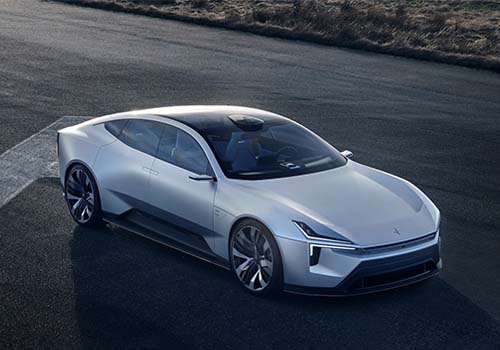
Interview
Maximilian Missoni
1 Please give us a brief bio of yourself and your design background.
I am Maximilian Missoni, Head of Design at Polestar. I was born in Austria into a family of architects and have practically grown up with design. I then studied vehicle design at the Royal College of Art in London. Already there, the aspect of sustainability was something that was particularly important to me. Ten years after I graduated, I joined Volvo as exterior chief designer and became Vice President of Exterior Design two years later. Since 2018 I have been in charge of the design department at Polestar.
2 What made you become/why did you choose to become a designer/artist?
Designing has been a big part of my life already from an early age. As a teenager I spent a lot of my time drawing, it started with boats, but soon cars captured my imagination.
3 Tell us more about your business/company, job profile, and what you do.
Polestar is an electric performance car brand unlike any other. We innovate to drive progress and create a better future and to initiate a new era in automotive design and move away from traditional conventions. For me, accelerating the industry’s transformation to a more sustainable future is a priority, and I believe that you have to do it from the inside out. That’s one of the most exciting aspects of me joining Polestar. As a new brand, Polestar offers a great opportunity to break new ground, not only in design but also in the materials used and the production possibilities. The biggest task when setting up the design language for a new brand as a team is to distil philosophy and values into three dimensional objects and ultimately products that people want to live with.
4 To you, what makes a “good” design?
For me, minimalistic designs are the most interesting. Stripping away the non-essential, leaving a pure, yet iconic aesthetic. Great design is the result of daring to experiment, innovate and challenge traditional concepts. Take the Precept as an example, the design is bold enough to catch people’s attention, yet realistic enough to keep them inspired. If the dream is not realistic enough it’ll remain in the stage of being a designer’s vision, a concept. And as we know, Precept is not just a concept. It’s a commitment of where we want to go as a brand.
5 Describe your design style and its main characteristics.
I am always looking to create character in a design. Beauty is the entry ticket and leads to an impulse to engage, character is the key to a long term relationship.
6 Congratulations! As the winner of the 2021 MUSE Design Awards, what does it mean to you and your company and team to receive this award distinction?
As a design-led brand, winning the MUSE Design Awards means a lot to us. With Polestar Precept, we wanted to consciously question the conventions within the automotive industry, using an avant-garde design to highlight possibilities for redefining sustainable premium.
7 Can you explain a bit about the winning work you entered into the 2021 MUSE Design Awards, and why you chose to enter this project?
We entered into MUSE Design Awards with our commitment car – Polestar Precept. At Polestar, we know that electric vehicles offer a route to climate-neutrality but being electric isn’t enough. With Precept we’ve gone further than we’ve done before, showing that sustainable and innovative materials don’t have to come at the expense of design or quality. The vehicles’ design is futuristic yet realistic, representing the next logical step for Polestar. The reason why we chose to enter with Polestar Precept was to show the world that it is possible to redefine premium with a sustainability top of mind. We believe that the journey towards zero already starts at the drawing board, meaning we must experiment and innovate at every step, focusing on designing away waste and finding innovative and recycled materials.
8 What was the biggest challenge with this project?
We understood, that as a new player in the automotive world we cannot quote the traditional paradigms and symbols to quickly be recognised as a premium brand. We have to use the power we have as designers to create a desire for the right materials, using the right processes to contribute to a positive change. Turning rough natural fibres and recycled bottles into a true luxury product was the biggest challenge.
9 What are your top three (3) favorite things about our industry?
The emotional connection people have with our product. The impact our products have on people’s lives and the responsibility that comes with it. The incredible potential we have to positively affect the issues we face with climate and resources by taking the right steps within this huge industry.
10 Where do you see the evolution of design industry going over the next 5-10 years?
Design is increasingly recognised as the key to creating fully circular products. Only if the product is redefined to fulfil the right prerequisites from its conception we can ensure circularity. This will redefine the role of design within product development. As designers, we are able to evoke desire in people. It has become our most important tasks to use this ability responsibly.
11 What is your key to success? Any parting words of wisdom?
Car design is and will always be a very competitive field compared to other areas within the car industry. In design, we encourage a healthy competition because we need to push each other to get to the best results. But that also means that it’s important to learn how to deal with defeat. With losing a project or a competition. It's never easy, but when you overcome it and you are able to turn the occasional defeat into motivation, you're going to succeed.


